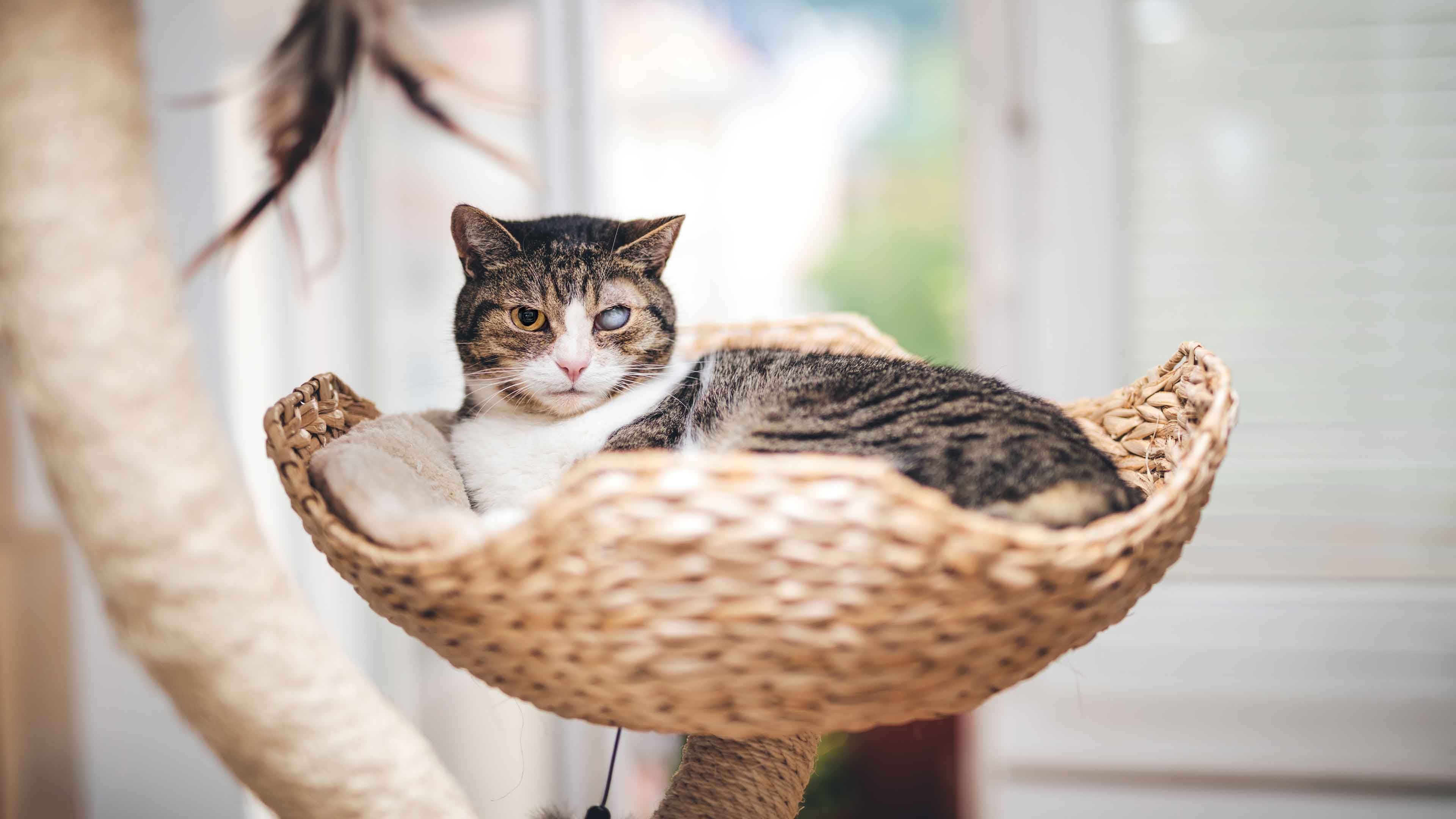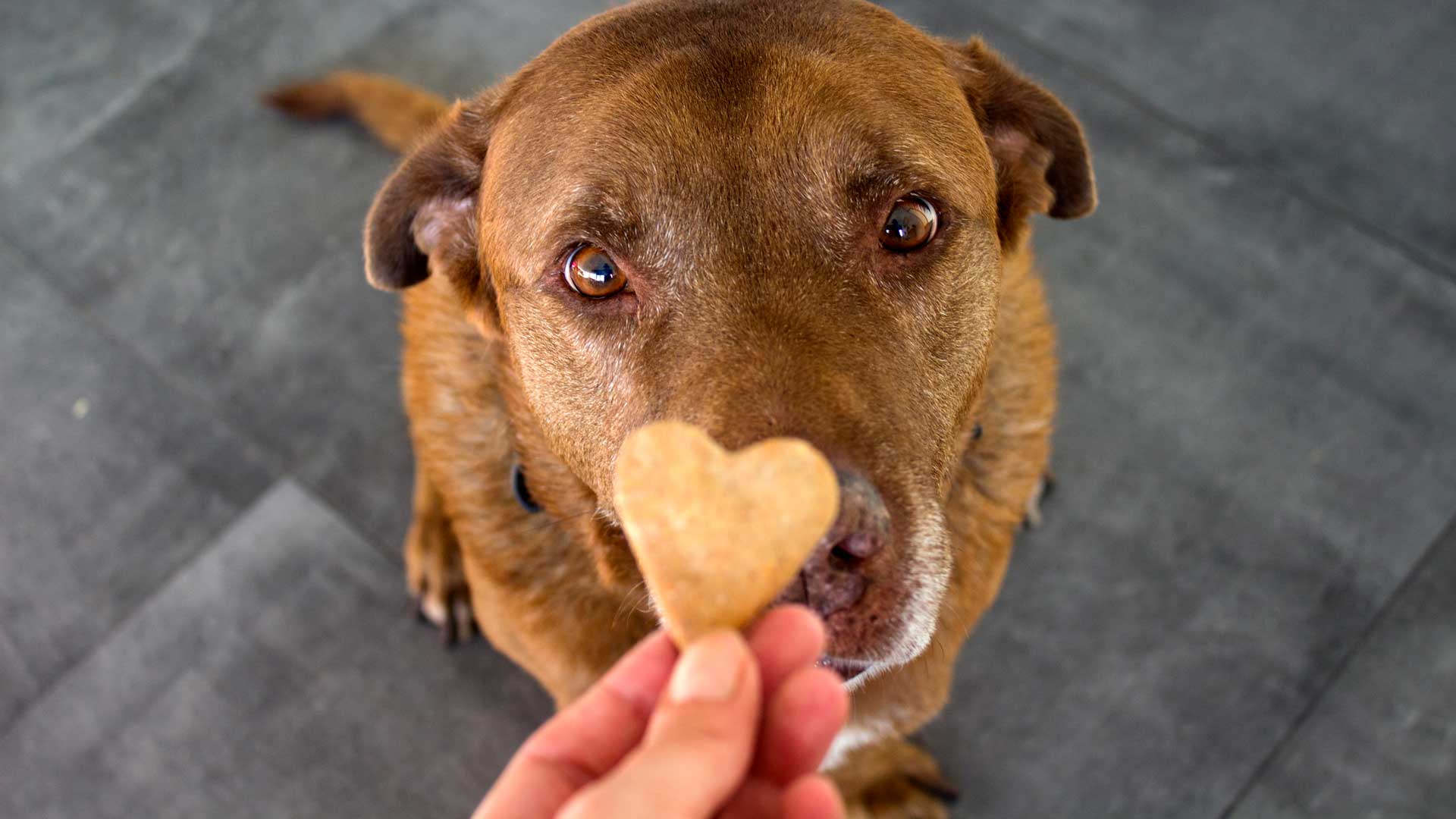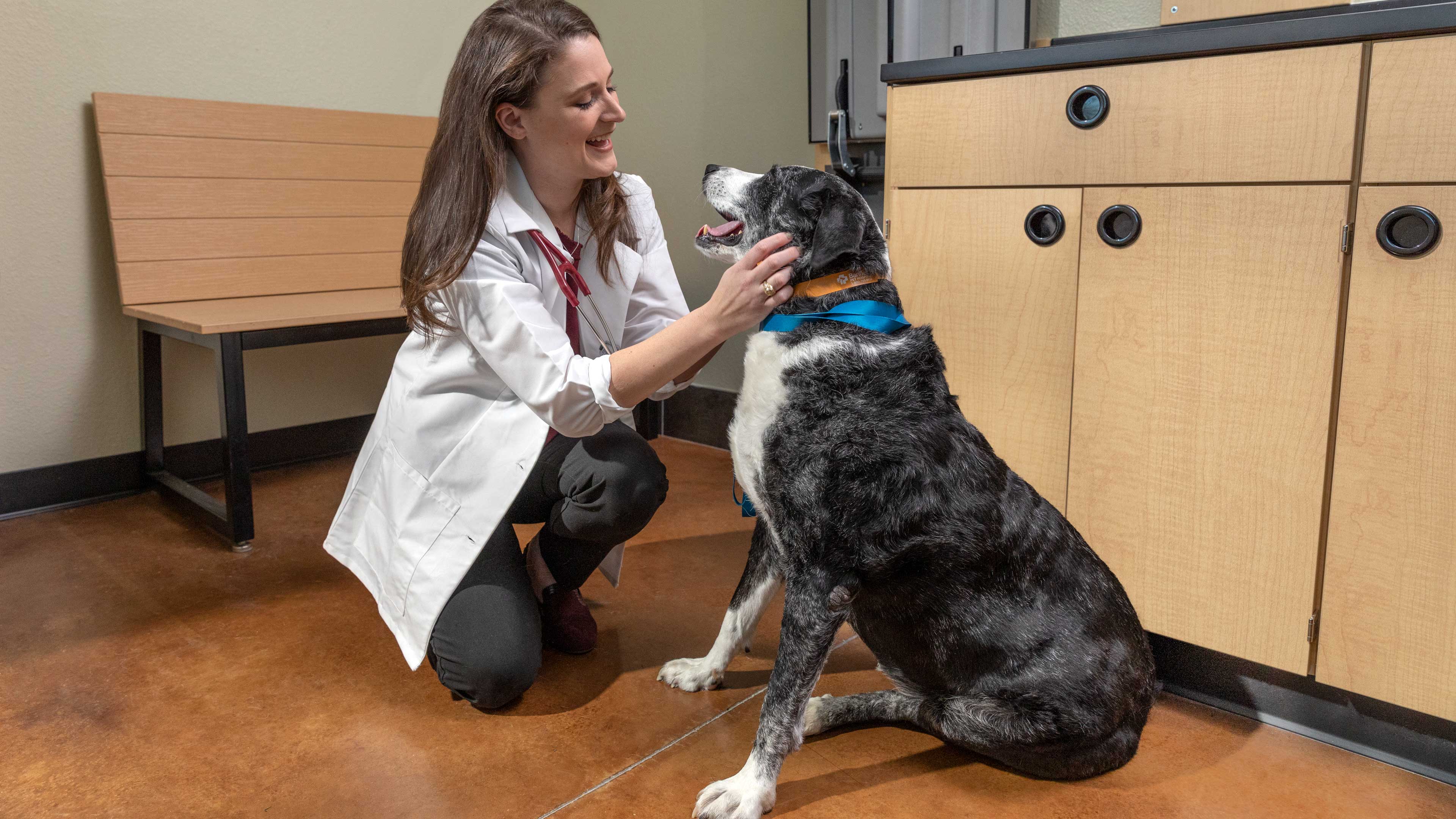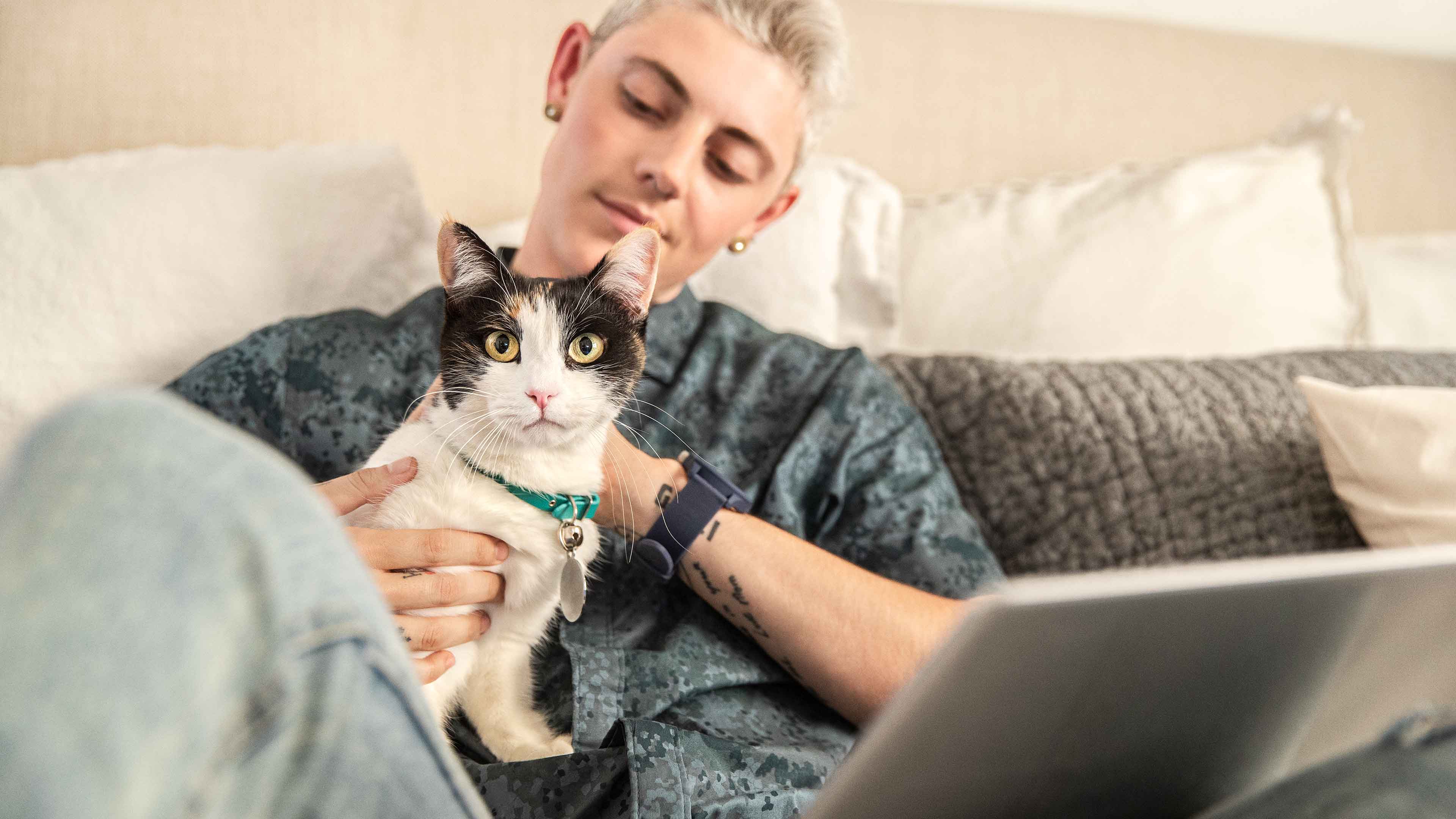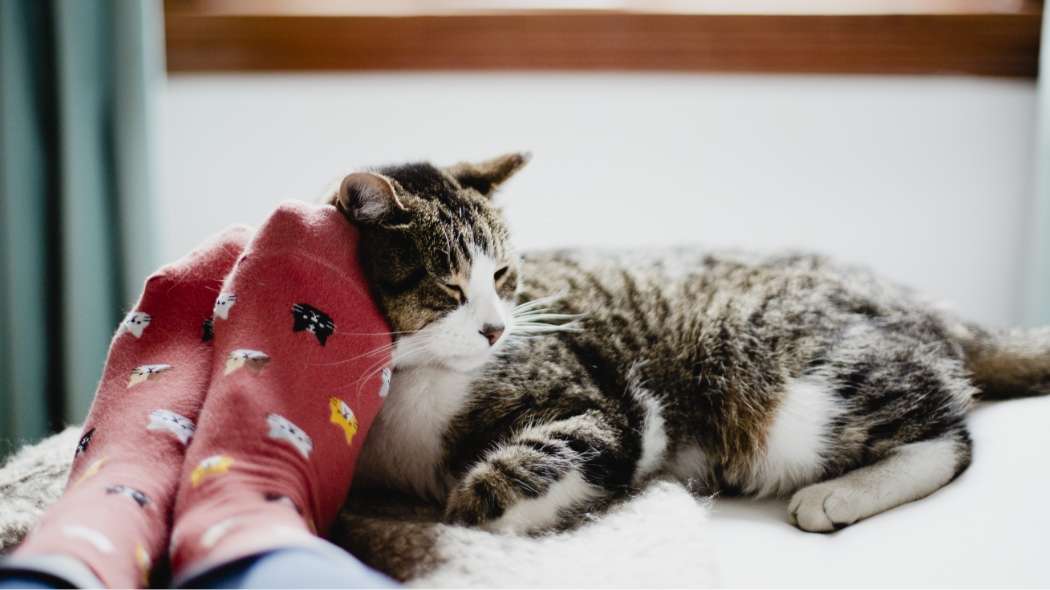aging gracefully: how to navigate your pet’s golden years
Caring for a senior pet is a special experience. While to us they may always seem like puppies and kittens, as they advance in years, you’ll start to notice gradual changes in their behavior, and there may be other underlying changes to be aware of as well.
We spoke to Banfield Pet Hospital veterinarian Dr. Andrea Sanchez on a recent episode of our podcast, Not Just Fluff, about senior pets. From health and dental best practices to what to consider in your pet’s home environment, Dr. Sanchez shares a veterinarian’s perspective on caring for our aging BFFs.
What do you mean I have a senior pet?
“Any patient over eight years of age is considered geriatric to your veterinarian. Now, I know that that's hard for some of us to wrap our minds around. It's different for every individual patient. And in particular, when it comes to the breed of dog, the smaller-breed dogs tend to live a lot longer. So eight years old for a miniature Poodle is not [the same as] eight years old for a Great Dane. It can really vary by breed and by lifestyle. Taking care of their teeth, whether or not they have a heart condition, how bad their arthritis is, all these things make a huge difference.”
-Dr. Andrea Sanchez
For some, the word “senior” seems to go hand in hand with slowing down and health issues. But it’s important to note that senior does not necessarily mean slow, and age is not a disease. When caring for a senior pet, knowledge and a good relationship with your veterinarian will allow you to give your aging pal the care they need to enjoy their golden years.
With age comes change
From nose to tail, you may notice small changes in your pet’s behavior as they age. For Dr. Sanchez, there are certain areas where most pet owners commonly notice these shifts.
“There's probably [two] main areas that you'll see major changes. One is teeth. In oral health, you will start to see periodontal disease and just the accumulation of plaque and tartar, and the effects of long-term plaque and tartar buildup start to really, really show themselves after the ages of eight and nine. Especially if your pet has never had their teeth brushed and never had a professional dental cleaning, you will start to see receding gumline, loose teeth, and oral pain.
"And then I would say probably the other big, big area where we very commonly see changes is bone and joint health. So we start seeing the effects of long-term joint inflammation, arthritis, osteoarthritis. Or just little aches and pains that didn't used to be there before.”
-Dr. Andrea Sanchez
Gradual changes in your furry friend’s behavior may not always be easy to notice, especially in our feline pals, who are masters at hiding pain and discomfort. This is a major reason that continuing with your pet’s preventive care routine is so important throughout their lives.
Nutritional nom-noms — the right diet for your senior pet
With an abundance of senior pet food blends available, it’s easy to work with your veterinarian to find the right diet for your senior pet. One thing to note when switching over to a senior diet is the amount you’re feeding your pet.
“One of the biggest changes is actually just calorie content. We tend to overfeed and feed more calories than our pets really need when they're a little older. Metabolism does slow down a little bit. That's a big one. Every other nutritional concern is going to be very, very particular to the patient. There's not some general blanket diet that's great for every older pet. [It’s] very much going to depend on your pet's needs as determined by your vet.”
-Dr. Andrea Sanchez
Keep it moving
As you see your beloved pet start to slow down a bit, it is often our natural inclination to protect them by reducing their activity. Dr. Sanchez cautions that although it may seem counterintuitive, it is important to keep our senior pets moving.
“Mobility is still important. It sometimes is uncomfortable for us to see them uncomfortable. We need to keep them moving for a couple of reasons. One is, we keep the weight off that way, and weight is the number one contributing factor to osteoarthritis, pain, and inflammation. And two, we need to keep the joints lubricated and keep the joints moving. Keeping the fluid in the joints circulating reduces inflammation in the joints.”
-Dr. Andrea Sanchez
How do you know if your pet is experiencing joint pain or stiffness?
“It's just about slowing down and watching carefully. Watch your cat when they walk up and down the stairs, if you have stairs. Watch them when they're jumping onto and off of their usual perches. You will see a slower and more stilted, stiff kind of movement. Getting old, [there] is often stiffness in their gait. And you can see that if you just watch, for about two to three minutes, your cat walking up and down the stairs.
"You can usually see that stiffness for your dog. They're having a harder time getting up from a lying down or seated position. It's just a little harder to pull themselves up. The other big thing that you'll notice with dogs is traction on slippery surfaces starts to go down. Once their joints aren't as strong, the muscles around their joints start to get weaker as well. And if they're standing on carpet or a rug, they all seem pretty secure. If they're standing on a tile floor, they will start to slip a little bit more and they'll have a harder time getting up. So grip is a big part of it. You will notice all of those things as being probably a sign that your pet is in pain.”
Bringing it all together
To make sure you’re giving your precious senior pet the best care possible, work with your veterinarian to ensure you are making the appropriate shifts to their care to account for the changes they are experiencing. We’ve included a handy list below of things to keep in mind as your BFF enters their senior years.
- Preventive care – Keep those vet visits coming! You may also want to consider ramping up the frequency of visits.
- Oral health – Keep up with your pet’s dental routine, and keep an eye out for changes in their breath as well as missing teeth.
- Nutritional notes – Speak to your veterinarian about the best way to shift your senior pet’s diet, and note that they will likely require fewer calories in their senior years.
- Mobility – Keep your senior pets moving. They may not be able to move in the same manner they could when they were young, but keeping their joints moving is important.
- Changes to your home environment – Minor changes like elevating food and water dishes or adding carpets for your dog to have more traction are great. Try to avoid huge changes like moving furniture around, which may confuse a senior pet.
Seeing your veterinarian more often allows them to detect changes early and start treatments ASAP to better support your furry friends as they age.
Optimum Wellness Plan packages designed for all ages and stages
We offer a range of OWPs designed for different needs, ages, and lifestyles — including our Senior Care plan that combines preventive services like vaccinations and exams with in-depth diagnostic testing to detect early signs of illness. Shop packages now.
Listen to the full podcast episode with Dr. Andrea Sanchez, and don’t forget to rate and review Not Just Fluff on Apple Podcasts!
 Mites and mange
Mites and mange Podcast - Not Just Fluff
Podcast - Not Just Fluff



